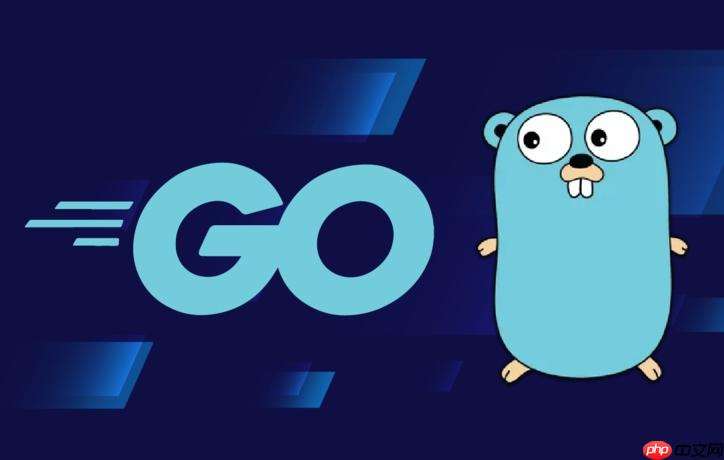Worker Pool通过复用Goroutine管理并发任务,采用生产者-消费者模型,由Task、Worker和Pool组成,利用缓冲channel存放任务,避免频繁创建销毁Goroutine带来的性能开销。

在高并发场景下,频繁创建和销毁 Goroutine 会带来显著的性能开销。Golang 中的 Worker Pool(工作池)模式是一种高效管理并发任务的经典方案。它通过复用固定数量的 Goroutine 处理大量任务,既能控制资源消耗,又能提升执行效率。本文将深入讲解如何实现一个轻量级、可复用的并发任务框架。
Worker Pool 的本质是“生产者-消费者”模型:
这种方式避免了为每个任务启动新 Goroutine 的开销,同时防止系统因 Goroutine 泛滥而崩溃。
一个典型的 Worker Pool 包含三个核心组件:
立即学习“go语言免费学习笔记(深入)”;
1. Task(任务):表示一个可执行的函数单元。 2. Worker(工作者):从任务队列拉取任务并执行。 3. Pool(池):管理 Worker 生命周期和任务分发。定义任务类型:
type Task func()
Worker 结构体:
type Worker struct {
id int
taskChan <-chan Task
quit chan struct{}
}Pool 结构体:
type Pool struct {
workerCount int
taskQueue chan Task
}每个 Worker 在独立 Goroutine 中运行,监听任务通道和退出信号:
func (w *Worker) start(wg *sync.WaitGroup) {
defer wg.Done()
for {
select {
case task, ok := <-w.taskChan:
if !ok {
return // 通道关闭,退出
}
task() // 执行任务
case <-w.quit:
return
}
}
}Pool 启动指定数量的 Worker:
func (p *Pool) Start() {
var wg sync.WaitGroup
for i := 0; i < p.workerCount; i++ {
worker := &Worker{
id: i,
taskChan: p.taskQueue,
quit: make(chan struct{}),
}
wg.Add(1)
go worker.start(&wg)
}
// 等待所有 Worker 完成(可选阻塞)
wg.Wait()
}提供 Submit 方法向任务队列发送任务:
func (p *Pool) Submit(task Task) {
p.taskQueue <- task
}关闭 Pool 时,关闭任务通道通知所有 Worker 退出:
func (p *Pool) Stop() {
close(p.taskQueue)
}注意:Submit 应在 Stop 前调用,否则向已关闭 channel 发送数据会 panic。可在实际项目中加入状态判断或使用 context 控制生命周期。
完整使用流程:
pool := &Pool{
workerCount: 4,
taskQueue: make(chan Task, 100), // 缓冲队列
}
<p>// 启动 Pool
go pool.Start()</p><p>// 提交任务
for i := 0; i < 10; i++ {
i := i
pool.Submit(func() {
fmt.Printf("Worker executing task %d\n", i)
time.Sleep(time.Second)
})
}</p><p>// 模拟运行一段时间后关闭
time.Sleep(5 * time.Second)
pool.Stop()基本上就这些。一个轻量级 Worker Pool 不复杂但容易忽略细节,比如 channel 关闭时机和异常恢复。掌握这个模式,能帮你写出更稳定高效的并发程序。
以上就是Golang 如何实现一个轻量级并发任务框架_Golang Worker Pool 模式深入讲解的详细内容,更多请关注php中文网其它相关文章!

每个人都需要一台速度更快、更稳定的 PC。随着时间的推移,垃圾文件、旧注册表数据和不必要的后台进程会占用资源并降低性能。幸运的是,许多工具可以让 Windows 保持平稳运行。

Copyright 2014-2025 https://www.php.cn/ All Rights Reserved | php.cn | 湘ICP备2023035733号